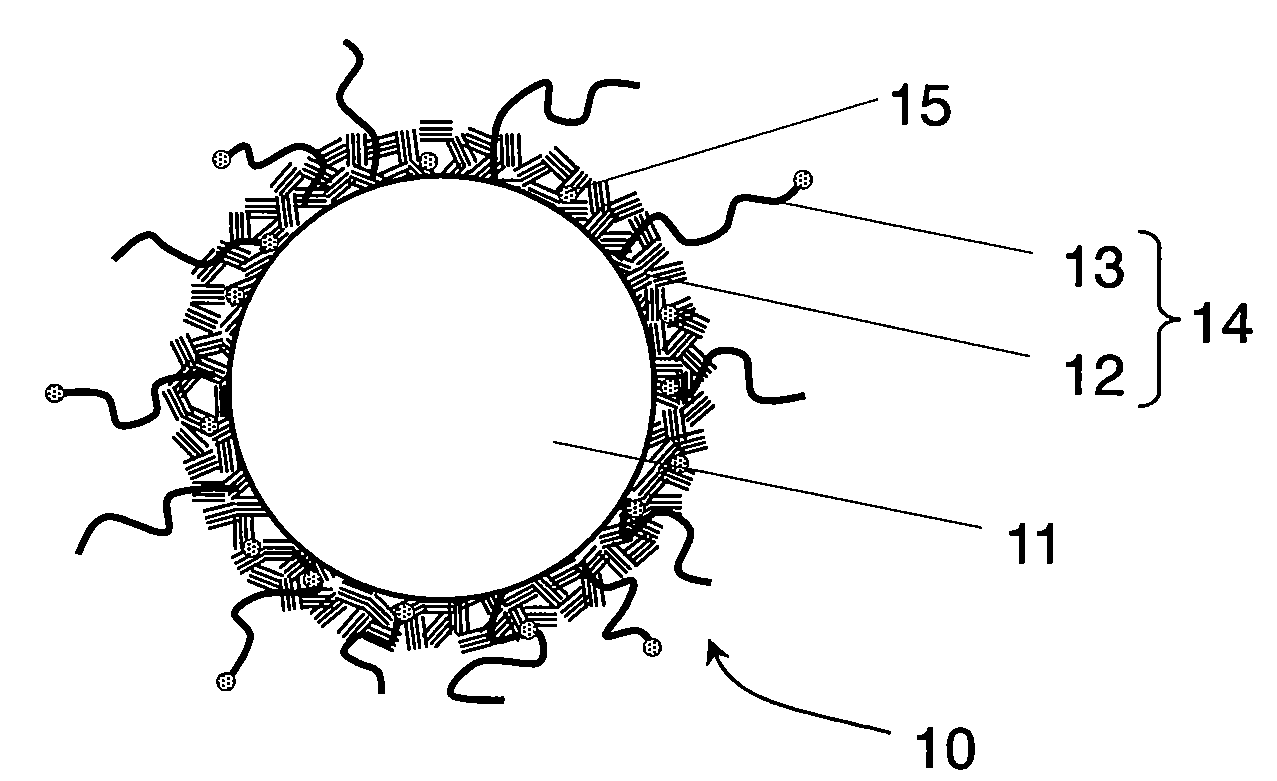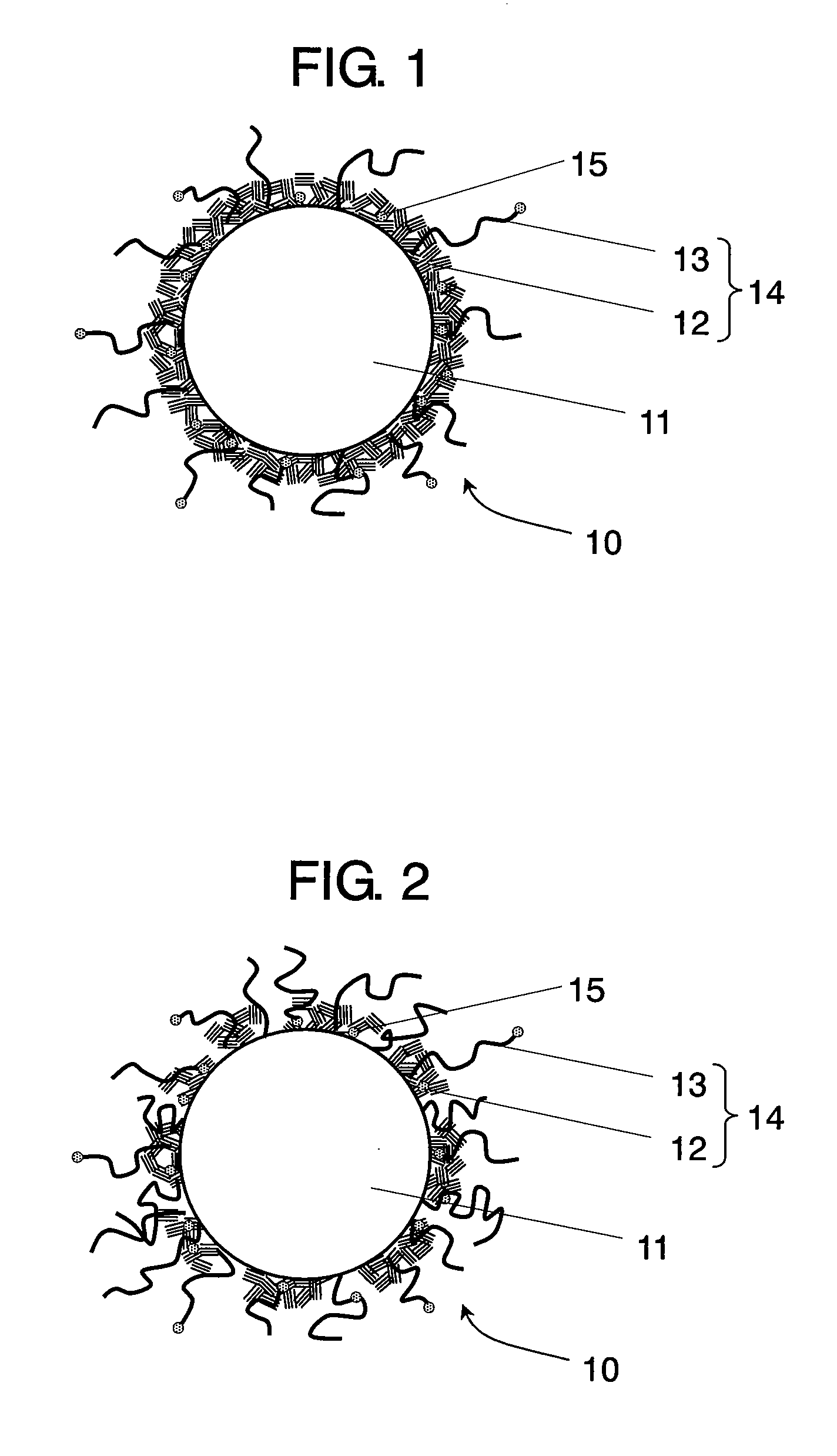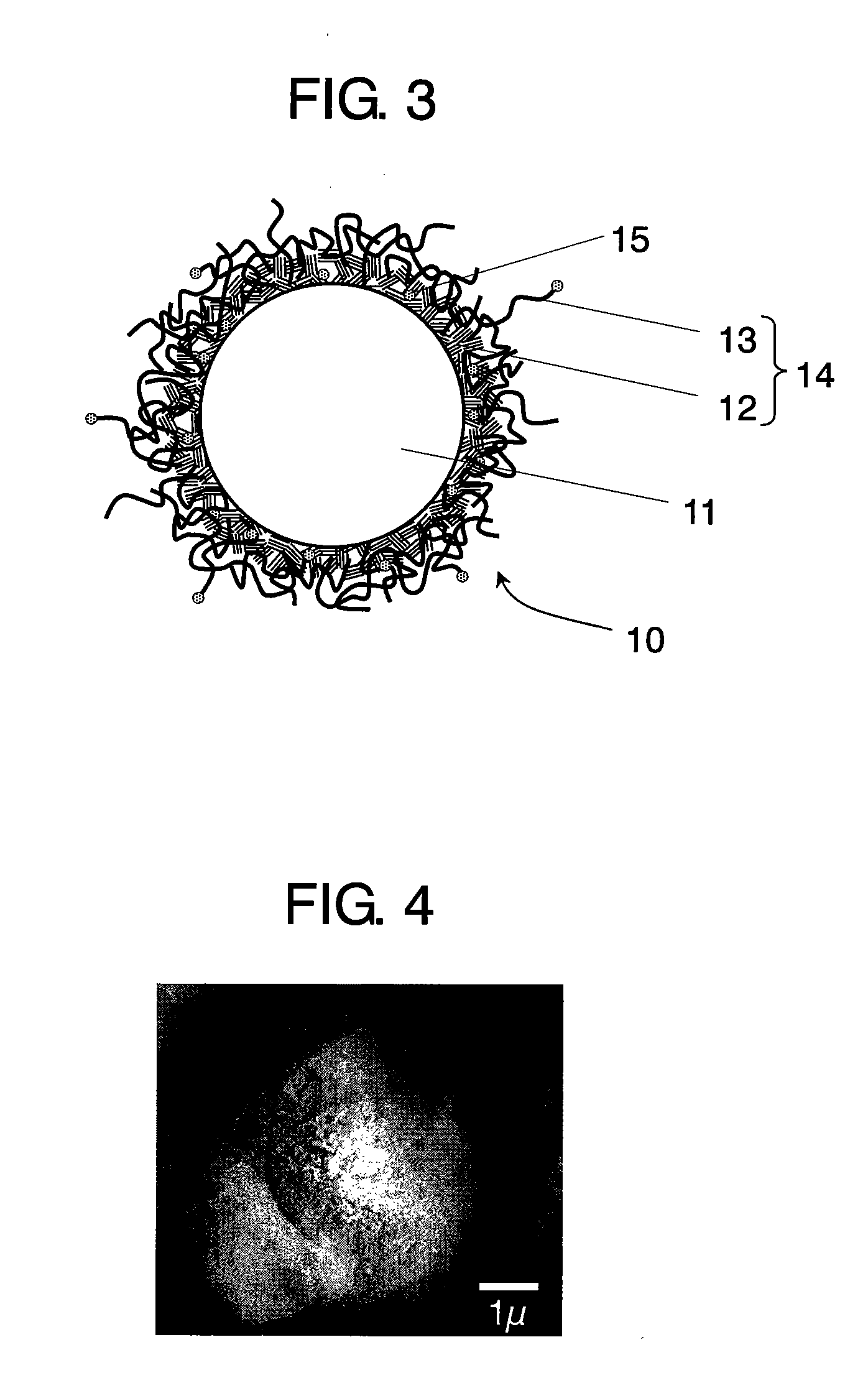Conductive composite particle, method of manufacturing the same, electrode using the same, lithium ion secondary battery
a technology of composite particles and which is applied in the direction of conductors, cell components, electrolytic capacitors, etc., can solve the problems of insufficient charge-discharge characteristics of lithium ion secondary batteries having a negative electrode singly made of such materials, capacity loss, and disadvantageous internal resistance of batteries
- Summary
- Abstract
- Description
- Claims
- Application Information
AI Technical Summary
Benefits of technology
Problems solved by technology
Method used
Image
Examples
example 1
Electrode Material A1
[0094]An example is described where aromatic polyimide is used as a polymer material to be applied to an active material particle.
[0095]Aromatic polyimide is synthesized by an organic synthesis method generally called a solution method. A specific method is as follows. Using dimethylacetamide (DMAC) as solvent, pyromellitic dianhydride (PMDA) and 4,4′-diaminodiphenyl ether (ODA) are mixed at the same mol and then made to react with each other, thereby producing 10 wt % polyamic acid solution (hereinafter referred to as “PAA solution”). For adding nickel (Ni) as a catalyst element for forming a carbon layer to the polymer material, nickel nitrate hexahydrate (Ni (NO3)2.6H2O) is added to PAA solution so that the ratio of Ni to the polymer component is 10 wt %, and is stirred for several hours to be dissolved.
[0096]Then, silicon (Si) particles are mixed into Ni-added PAA solution (Ni-PAA solution), and stirred with a magnetic stirrer. Then, the solution mixed with ...
example 2
Electrode Material B1
[0101]Operation similar to that of example 1 is performed except that cobalt nitrate hexahydrate, instead of nickel nitrate hexahydrate, is contained in the polyimide layer.
[0102]As a result, Si particles coated with a porous carbon layer and fibrous carbon layer substantially similar to those of example 1 are formed. The formed Si particles are used as electrode material B1 of a non-aqueous electrolyte secondary battery.
example 3
Electrode Material C1
[0103]A solution where nickel nitrate hexahydrate is dissolved in ion-exchanged water is prepared. The concentration of the nickel nitrate hexahydrate is 1 part by weight per 100 parts by weight of ion-exchanged water. The Si particles used in example 1 are mixed into the nickel nitrate solution and stirred for one hour, and the moisture is removed by an evaporator, thereby making the Si particle surface support nickel nitrate.
[0104]The Si particles supporting the nickel nitrate are mixed into the PAA solution, and stirred with a magnetic stirrer. Then, the solution mixed with the particles is moved into a petri dish, and the petri dish is placed in a vacuum drier evacuated by a rotary pump, dried, and heated, thereby transforming the PAA into imide. After imidization, the obtained sheet-like sample is slightly ground with a glass mortar into a powder form. As a result, the Si particles supporting nickel nitrate that are coated with polyimide are obtained.
[0105]...
PUM
 Login to View More
Login to View More Abstract
Description
Claims
Application Information
 Login to View More
Login to View More - R&D
- Intellectual Property
- Life Sciences
- Materials
- Tech Scout
- Unparalleled Data Quality
- Higher Quality Content
- 60% Fewer Hallucinations
Browse by: Latest US Patents, China's latest patents, Technical Efficacy Thesaurus, Application Domain, Technology Topic, Popular Technical Reports.
© 2025 PatSnap. All rights reserved.Legal|Privacy policy|Modern Slavery Act Transparency Statement|Sitemap|About US| Contact US: help@patsnap.com



